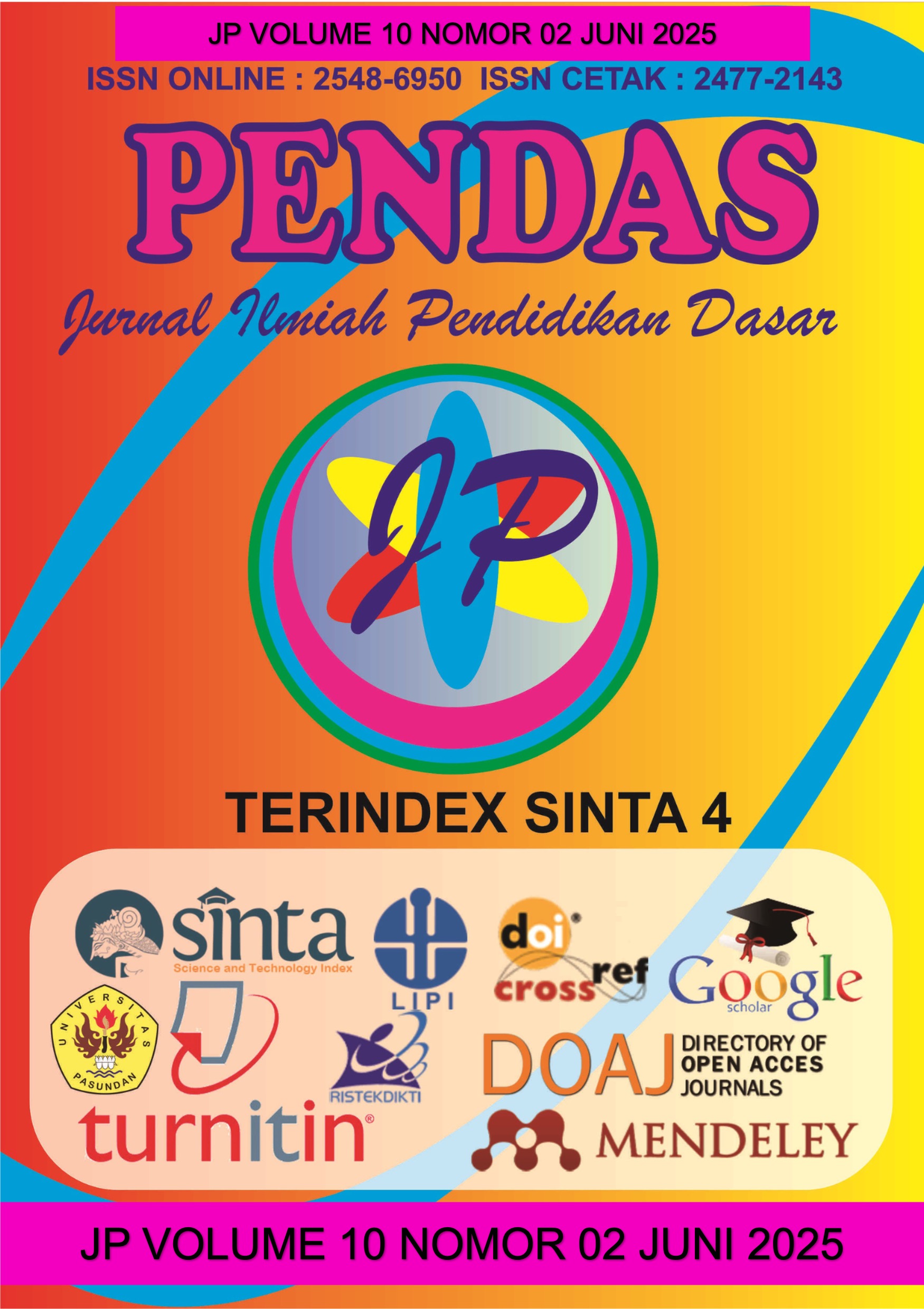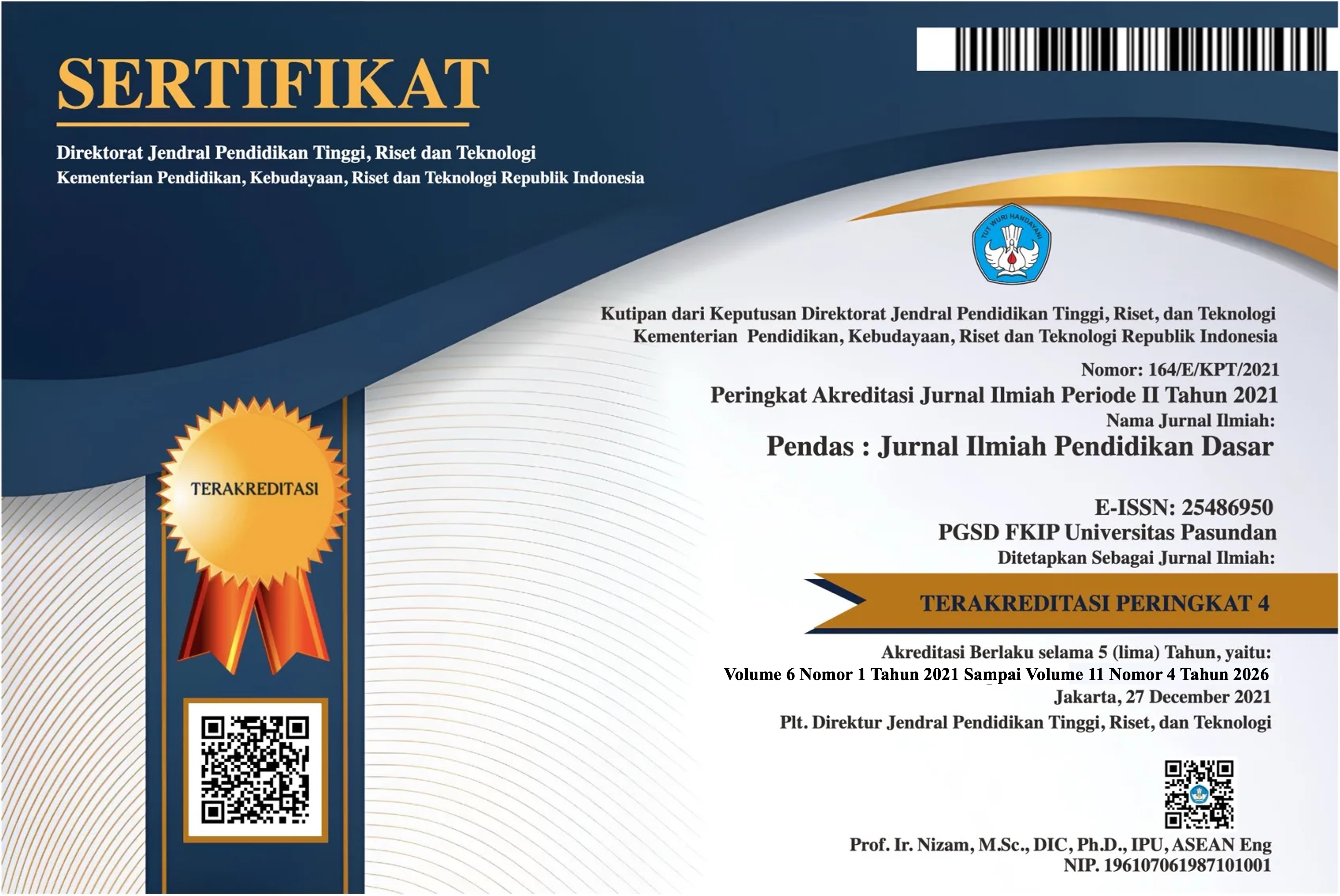LITERASI DAN MINAT BACA MELALUI MODEL PEMBELAJARAN COOPERATIVE INTEGRATED READING AND COMPOSITION (CIRC) BERDASARKAN GENDER DI MADRASAH IBTIDAIYAH NEGERI (MIN) 1 KOTA SAWAHLUNTO
DOI:
https://doi.org/10.23969/jp.v10i02.28987Keywords:
Effectiveness, CIRC, Reading literacyAbstract
This study aims to analyze the effectiveness of the Cooperative Integrated Reading and Composition (CIRC) model in improving students' reading literacy and reading interest based on gender at MIN 1 Sawahlunto City. This research method is a quasi-experimental with a pretest-posttest control group design. Data were collected through literacy tests and reading interest questionnaires. The results showed that students who participated in learning with the CIRC model experienced a significant increase in reading literacy and reading interest compared to students who participated in conventional learning. In addition, there were differences in literacy achievement and reading interest based on gender, where female students showed a higher increase than male students. This study suggests the widespread application of the CIRC model in elementary education as an effective strategy to improve literacy quality.Downloads
References
Allington, R. L. (2012). What Really Matters for Struggling Readers: Designing Research-Based Programs.
Bandura, A. (1986). Social foundations of thought and action: A social cognitive theory. Prentice-Hall.
Bandura, A. (2001). Social Cognitive Theory: An Agentic Perspective. Annual Review of Psychology.
Deci, E. L., & Ryan, R. M. (1985). Self-Determination Theory. Psychological Inquiry, 11(1), 227-268. https://doi.org/10.1207/s15327965pli1101_14
Firmansyah. (2018). Pengaruh model pembelajaran terhadap hasil belajar siswa di sekolah dasar. Jurnal Pendidikan Dasar, 12(1), 45–60.
Guthrie, J. T., & Humenick, N. M. (2004). The importance of motivation for reading comprehension. Educational Psychology Review, 16(1), 1–20. https://doi.org/10.1023/B:EDPR.0000012342.90120.f4
Guthrie, J. T., & Wigfield, A. (2000). Engagement and motivation in reading. In M. L. Kamil, P. B. Mosenthal, P. D. Pearson, & R. Barr (Eds.), Handbook of reading research (Vol. 3, pp. 403–422). Lawrence Erlbaum Associates.
Hidi, S., & Anderson, V. (1986). Interest and Its Role in Learning and Memory. Review of Educational Research, 56(2), 219-244. https://doi.org/10.3102/0034654305600221
Lailan, A., dkk. (2023). Pengaruh Model CIRC terhadap Literasi Membaca. Jurnal Pendidikan dan Kebudayaan, 8(1), 15-30. https://doi.org/10.31851/jpk.v8i1.7191
OECD. (2023). PISA 2021 Results: Reading Literacy. OECD Publishing. https://doi.org/10.1787/9f8e3a8b-en
Retnaningtyas, R. (2020). Pengaruh Minat Baca terhadap Literasi Membaca Siswa. Jurnal Penelitian Pendidikan, 17(1), 15-30. https://doi.org/10.17509/jpp.v17i1.26233
Schiefele, U. (1999). Interest and learning from text. Scientific Studies of Reading, 3(3), 257–279. https://doi.org/xxxx
Slavin, R. E. (1995). Cooperative learning: Theory, research, and practice (2nd ed.). Allyn & Bacon.
Snow, C. E. (2010). Academic language and the challenge of reading for learning about science. Science, 328(5977), 450–452. https://doi.org/10.1126/science.1182597
Stevens, R. J., et al. (1987). The effects of cooperative learning on reading comprehension achievement in elementary school students. Journal of Educational Psychology, 79(1), 52–61. https://doi.org/10.1037/0022-0663.79.1.52
Supriyadi, S. (2021). Penerapan metode Cooperative Integrated Reading and Composition (CIRC) untuk meningkatkan kemampuan siswa dalam berbicara dengan bahasa Inggris. Journal Litbang, 14(2), 115-130. https://doi.org/10.33658/jl.v14i2.115
UNESCO. (2021). Global Education Monitoring Report.
Vygotsky, L. S. (1980). Mind in society: The development of higher psychological processes. Harvard University Press.
Downloads
Published
Issue
Section
License
Copyright (c) 2025 Pendas : Jurnal Ilmiah Pendidikan Dasar

This work is licensed under a Creative Commons Attribution 4.0 International License.



















